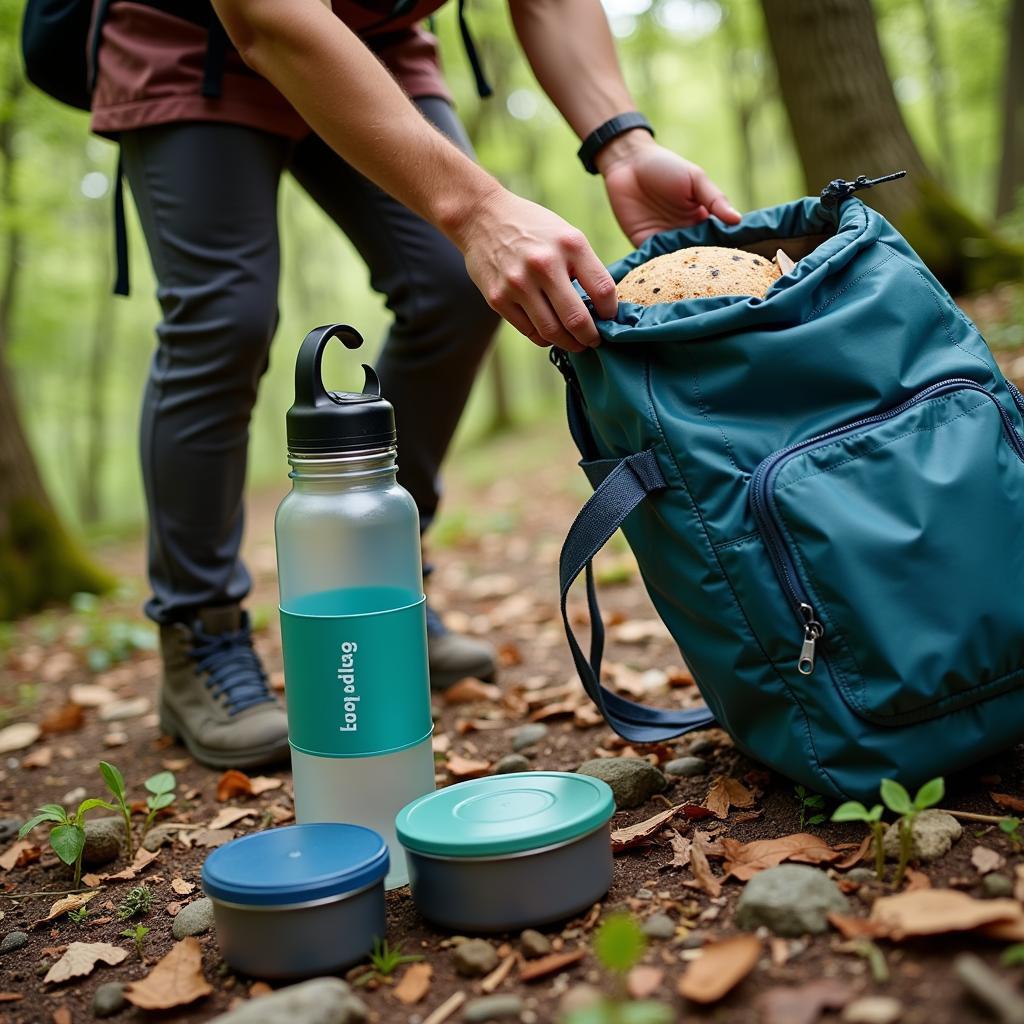Packing the right food is crucial for a successful hike. Food Storage For Hiking isn’t just about keeping your snacks from getting squished; it’s about maintaining freshness, minimizing weight, and ensuring you have the energy you need to conquer those trails. Whether you’re planning a day trip or a multi-day adventure, proper food storage can make or break your hiking experience. Let’s delve into the essential tips and techniques for mastering the art of trailside cuisine.
Choosing the Right Food Storage Containers for Your Hike
Selecting appropriate food storage containers is the first step towards a happy hiking belly. Lightweight and durable options are key. Consider reusable containers made from BPA-free plastic or silicone. These are not only eco-friendly but also easy to clean. Avoid glass containers due to their weight and fragility. For dry goods like granola or trail mix, zip-top bags are a convenient and space-saving choice. Vacuum-sealing food can also extend its shelf life and reduce bulk, making it an excellent option for longer treks. If you are looking for options for longer term storage, consider a 30 day emergency food supply.
For hot meals, insulated containers like a military mermite insulated food container are a game-changer. They keep your food warm for hours, allowing you to enjoy a comforting meal even on chilly mountaintops.
 Various food storage containers suitable for hiking, including reusable plastic containers, zip-top bags, and an insulated container.
Various food storage containers suitable for hiking, including reusable plastic containers, zip-top bags, and an insulated container.
Planning Your Hiking Meals: What to Pack and How to Organize It
Planning your meals in advance is essential for efficient food storage for hiking. Create a meal plan based on the length and intensity of your hike. Opt for nutrient-rich foods that provide sustained energy, such as nuts, dried fruits, whole-grain crackers, and energy bars. Consider organic dehydrated food for lightweight and nutritious options. Organize your food by meal to avoid rummaging through your backpack. Packing similar items together in separate bags or containers can further streamline the process.
How to Keep Food Fresh on the Trail
Maintaining food freshness is a top priority, especially during warmer months. Utilize reusable ice packs or frozen water bottles to keep perishable items cool. Pack these items at the bottom of your backpack to maximize their cooling effect. For longer trips, consider camp food without refrigeration to minimize spoilage. Properly sealing your food containers is crucial to prevent moisture and insects from getting in.
Protecting Your Food from Wildlife
Protecting your food from wildlife is not only important for your own sustenance but also for the well-being of the animals. Never leave food unattended. Store your food in airtight containers and hang it from a tree branch, well away from your sleeping area. Bear canisters are highly recommended in areas with known bear activity. These sturdy containers are designed to resist bear attacks and keep your food safe. If you are concerned about your food lasting during unexpected situations, looking into survival foods for sale can help provide peace of mind.
What are the best practices for food storage in bear country?
In bear country, using bear-resistant canisters is paramount. These specialized containers are designed to prevent bears from accessing your food. Properly storing your food in a bear canister and securing it away from your campsite can significantly reduce the risk of unwanted encounters.
Food Storage for Hiking: Minimizing Waste and Leaving No Trace
Practicing Leave No Trace principles is crucial for responsible hiking. Pack out all trash, including food scraps and packaging. Avoid bringing excessive packaging by repackaging food into reusable containers. Choose biodegradable soap for cleaning your dishes and utensils.
 A hiker packing out trash after a meal in the wilderness.
A hiker packing out trash after a meal in the wilderness.
Conclusion: Enjoying Your Hiking Culinary Adventures
Proper food storage for hiking allows you to enjoy delicious and nutritious meals on the trail, fueling your adventures and preserving the natural environment. By following these tips and techniques, you can enhance your hiking experience and ensure you have the energy you need to conquer any trail. Remember, a well-fed hiker is a happy hiker!
FAQ
- What are the best lightweight food storage containers for hiking?
- How do I protect my food from wildlife while hiking?
- What are some good food options for multi-day hikes?
- How can I minimize food waste while hiking?
- What are the benefits of using a bear canister?
- How do I keep my food cool on a hot hike?
- What are some good snacks to pack for hiking?
For any assistance regarding hiking food storage or other outdoor needs, please don’t hesitate to contact us. Call us at 02437655121, email us at [email protected], or visit us at 3PGH+8R9, ĐT70A, thôn Trung, Bắc Từ Liêm, Hà Nội, Việt Nam. We have a 24/7 customer service team ready to assist you.